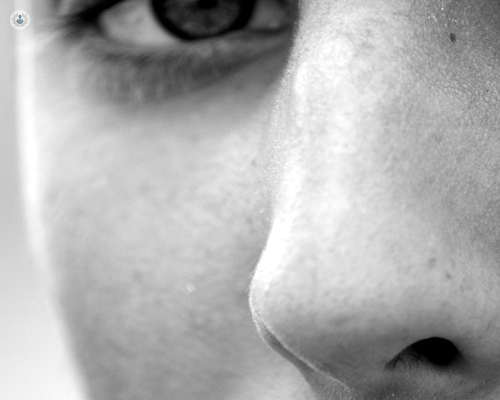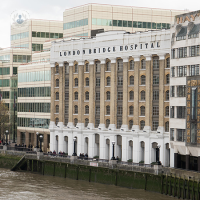Nasal trauma
Dr Bashar Bizrah - Otolaryngology / ENT
Created on: 11-13-2012
Updated on: 06-06-2023
Edited by: Jay Staniland
What is nasal trauma?
Nasal trauma is an injury to the nose or it’s surrounding areas. They can be either internal or external and thanks to the position of your nose, the nasal bones, cartilage and tissue are particularly vulnerable to external injuries.

What are the most common types of nasal trauma?
The commonest types of nasal trauma include nosebleeds, fractures (broken nose), chemical irritations or obstruction by a foreign object. Nasal trauma may result in nosebleeds because there are many blood vessels in the nose.
What are the symptoms of nasal trauma?
The symptoms of nasal trauma can be mild or severe. Common symptoms may include:
- pain or tenderness, especially when touching the nose
- swelling
- bleeding
- bruising around the nose or eyes
- crooked or misshapen nose
- difficulty breathing through the nose
- mucus from the nose
- feeling as though the nasal passages are blocked
What causes nasal trauma?
External nasal trauma often occurs as a result of a force to the nose from a fall, sports injury, motor vehicle accident or physical abuse among many possible causes. Internal nasal trauma occurs when the cartilage or blood vessels in the nose are damaged. Common causes include infections from nose piercings, irritation from inhaling certain substances, including illegal drugs such as cocaine, picking or scratching the nose or from a foreign object becoming stuck inside the nose.
How is nasal trauma diagnosed?
The doctor will press gently on the outside of your nose and the surrounding areas. They will also check inside the nasal passage for obstruction and any signs of broken bones or a foreign object. The doctor may use a nasal spray to make you feel more comfortable during the examination.
X-rays or a CT scan may be necessary if the severity of your injury makes a physical examination impossible.
How is nasal trauma treated?
Minor cases of nasal trauma can be treated at home depending on the type and severity. For example, minor nosebleeds can be treated if you sit upright and lean forward to reduce blood pressure in your nose. You may pinch both of your nostrils for five to 15 minutes.
Your doctor may suggest painkillers to ease discomfort, antibiotics to treat infections or nasal sprays to reduce irritation.
If there has been a severe nasal fracture, then surgery may be required. In other cases, intensive reconstructive surgery may be needed.



